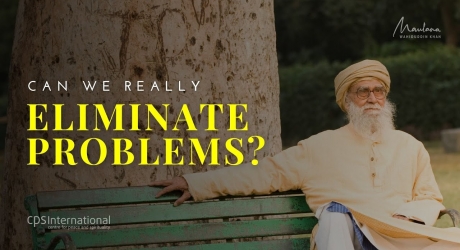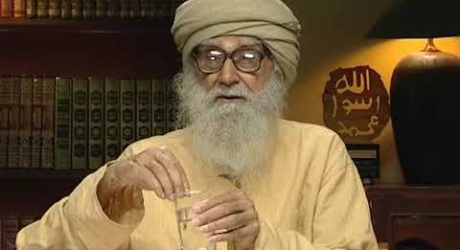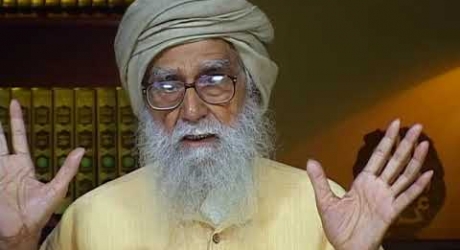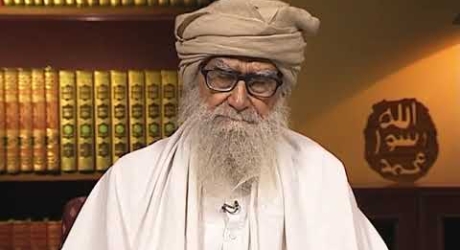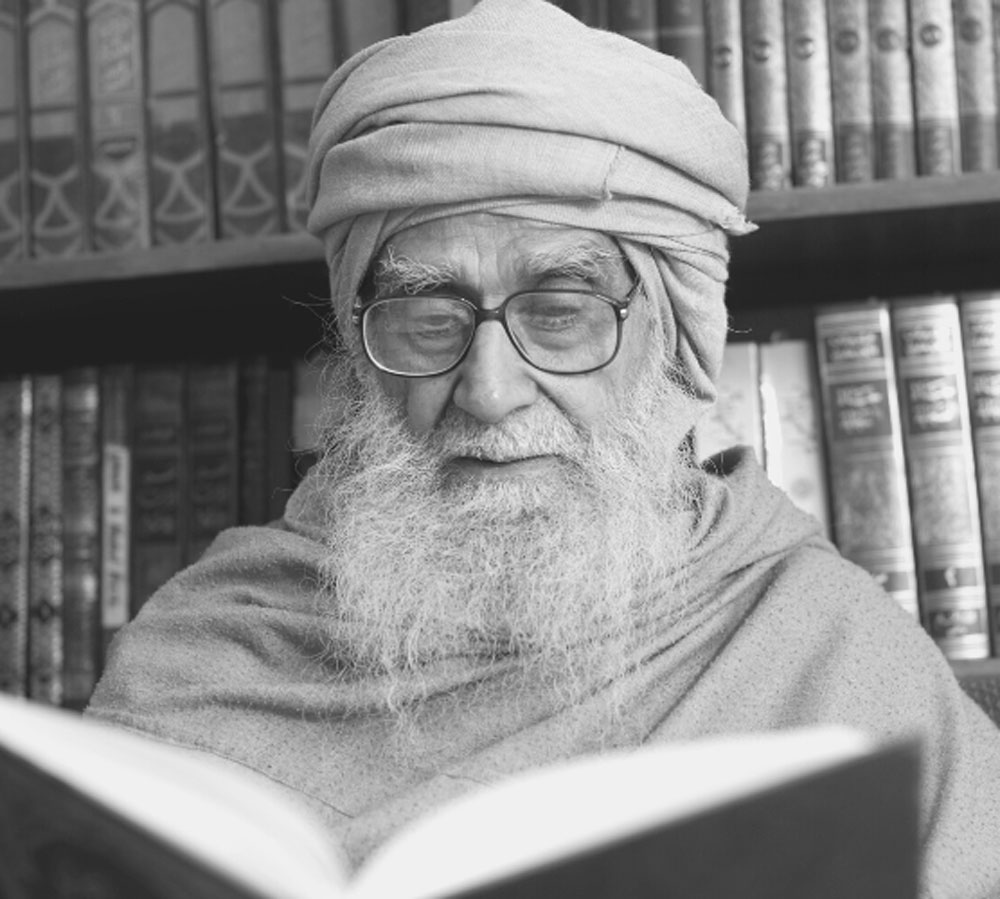Crisis management requires the presence of mind. It is the presence of the mind that helps one to manage crises successfully. The greatest quality needed for successful crisis management is only one: to forget the first chance you have lost and discover the second chance and avail of it. In every crisis, a person loses the first chance. One obsessed with losing the first chance cannot manage the crisis. The moment you get rid of the first loss, you can easily manage the problem in your favour. This principle applies not only to individuals but also to nations. A nation, too, often loses the first chance. At that time, national leaders should remove people’s focus from the first chance and draw their attention to the second chance. It is the only art of management of a crisis.
Introduction
Crisis is a part of life. Every person faces crisis either in – individual, social or international life. A crisis situation arises so as to test the wisdom or the ability of a person to cope with adversity, which cannot be assessed under normal circumstances. History is replete with examples of unsuccessful crisis management. For example, crisis may arise in case of failure to manage married life; the couple may separate or remain entangled in divorce suits.
Issue of Babri mosque
Today, I will address the topic of crisis management in the light of the Babri mosque issue. It was a crisis and the entire Muslim leadership failed to manage this crisis. It is pertinent to mention here that in the face of a crisis, one option is to react and the other is to patiently manage the situation. For example, if at home, the wife reacts to her irate husband, she would fail to manage the crisis. Instead if she remains silent, she would be able to manage the situation because anger increases with reaction and decreases with silence.
The Babri mosque issue was a similar crisis and Muslims, one to all, failed to manage it. Not only were huge losses suffered in terms of life and property, this issue severely strained the relationship between the two communities - Hindus and Muslims. Common perception holds the teachings of Islam responsible for the present Babri mosque crisis. This is because the actions of the present-day Muslims are considered to be a manifestation of Islamic teachings, leading to the notion that Islam failed to manage the crisis. According to my assessment, it is the present-day Muslims and not Islam that has failed to resolve the crisis. In fact, it would not be wrong to say that in this context, far from following the Islamic guidance, the Muslims did not even make the effort to understand the guidance offered by Islam.
Islamic guidance for managing a situation
In order to manage a crisis situation, Islam proffers two-point guidance. The first approach pertains to proactively deterring the likelihood of such a situation by adopting suitable course of action and resorting to safeguards. The second approach ordains how in event of its occurrence, such a situation may be managed. Let me explain this through examples.
It was during the caliphate of Umar Farooq, the second caliph that Palestine was conquered in 16 AH (638 AD). It was then that, at the request of the Christians, Umar Farooq travelled to Palestine in order to finalize the agreements between them and the Muslims. It is recorded in history that during his visit the following event took place: “Umar was sitting in the courtyard of the Church of Resurrection in Jerusalem when the time came for prayer. Umar then turned to the Christian Bishop and asked where he should say his prayers. The priest replied that he could pray right where he was seated. Umar, however, said, “No, it is not proper for me to pray inside the Church, because any Muslim who come here subsequently, will maintain that since Umar has said his prayers here, a mosque should be built on that very spot. Umar, therefore, moved a stone’s throw away, and said his prayers. Muslims did come to the city later on and, as he had foreseen, built their mosque at the exact point where he had said his prayers. This mosque exists to this day (Masjid-e-Umar) – short, but discreet distance away from the Church.
Such was the enlightened attitude of the true followers of the Prophet Muhammad, who averted the crisis in advance with his foresight. If a mosque had to be built, they did so, but away from any place which was likely to become controversial. But later-day Muslims, without any kind of mature deliberation, have insisted upon saying their prayers at places which are the subject of controversy and have built mosques right there on those very spots, without, it should be emphasized, adding one single brick to the bastions of Islam.
In the case of the Babri Masjid the opposite of this happened. In 1528, at the time when Babar ruled Awadh, there existed no mosque in Ayodhya. Mir Baqi, the governor of Babar was the disciple of a Sufi, famous, both among the Hindus and the Muslims. Mir asked his mentor about constructing a mosque at Ayodhya. The Sufi, naively, advised Mir to go ahead with the plan thinking that it would serve as a point of confluence for the Hindus and the Muslims. But the contrary happened. The issue was a potential controversy pre-Independence and became an actual crisis after India gained independence in 1947.
I had seen the Babri Masjid when I visited Faizabad during the British period in 1943. I had heard that there was a mosque there, which also had a place of worship of Hindus. When I reached the site, I could only see an abandoned and isolated structure of stone. No prayers or sermons were held inside it; I stopped to read Namaz there. As I looked around, I saw that one area of the mosque was covered and the other was open. The open area was on an elevated ground (chabutra). The chabutra was sacred for the Hindus and was incidentally older the construction of the mosque. In building the mosque adjacent to the chabutra, a blunder had been committed. This was a clear deviation from the Islamic principle according to which, the places of worship of two religions should be built at a considerable distance from each other.
Guidance in Islam for managing an actual crisis
Islam provides plain guidance to deal with a crisis situation like Ayodhya. This crisis which began in 1949 after three idols were placed inside the Babri mosque, spread like wildfire as reactions sparked leading to unending controversy between the two communities. All this while, no one bothered to refer to the Quran and Hadith for guidance on this issue. A similar incident had taken place at the time the Prophet was in Mecca. While the Babri mosque had only three idols that aroused the Muslim ire, Kabah which was built by the Prophet Abraham for the worship of One God housed three hundred and sixty idols. While the present-day Muslims could not exercise patience and gave into violent protests and demonstrations, the Prophet Muhammad acted patiently, guided by the following Quranic injunction
Purify your garments (74:4)
The Quranic injunction at this time sought the purification of Prophet and not Kabah. Prophet simply ignored the situation and tried to change people's hearts. And the result was that, within twenty years, Meccans abandoned idol worship and became the followers of the Prophet. Then those Meccans themselves removed the idols from the Kabah without any confrontation or bloodshed.
It is very important to understand how the Prophet managed the crisis. For thirteen years, the Prophet continued his mission in Mecca and raised no objection to the idols. Rather, the Prophet went and read Namaz inside the Kabah in the presence of the idols. The reason why the Prophet could do so was because he saw a great opportunity of dawah work that lay amidst the situation that prevailed at Mecca.
This city of Mecca was dominated by idolaters, who had placed in the Kabah 360 idols belonging to various Arabian tribes. The Kabah had, therefore, become a religious centre for all these tribes. It was the gathering point of the inhabitants of Mecca, and meetings were held there almost daily. The Prophet began to make use of these gatherings for the purposes of dawah. This was a clear example of managing the crisis. Had Muslims emulated the Prophetic example and spread the message of God to those who visited the Babri mosque for worshipping their idols, history would have been different. But unlike the Prophet who treated the audience that gathered to worship the idols as madu and recited to them the portions of the Quran, no present-day Muslim thought of spreading Islamic literature in Ayodhya; on the contrary they fostered the culture of hatred.
Prophetic model for managing crisis
The model of managing crisis according to the Prophet was to think positively and make a plan. The formula to reach to this plan is, ignore the problems (idols) and avail the opportunities (audience). This model stems from Islam’s non-tolerance of reactionary approach.
Reaction is contrary to patience. Often patience is construed to be inaction but actually it is the process of thinking and discovering opportunities that lie alongside the problems. While the present-day Muslims take pride in considering the Prophet Muhammad as a complete model, they depict through their actions that the model is not so because instead of planning, the Muslims resort to violence. So while the Prophet could manage the idols at Mecca, the Muslims failed to manage the situation at Ayodhya.
In 1991, during the prime ministership of Narasimha Rao, the Indian Parliament passed a legislation called the Places of Worship Act, 1991. According to this Act, the government of India was bound to maintain the status quo of all places of worship on the Indian soil as it stood in 1947. But there was an exception that of the Babri mosque of Ayodhya. The Act maintained that the Babri mosque issue was in court, so the government would wait and it would be its duty to implement the verdict of the court when it was given. This Act was a most reasonable one and Muslims should have accepted it as such. But they rejected it outright and resorted to street demonstrations.
The demolition of the Babri masjid on December 6, 1992, was nothing but the culmination of this negative course of action adopted by the Muslims. At that time I said: "Babri Masjid ko Hinduon ne toda aur Musalmano ne usko tudwaya." (The Hindus demolished the Babri masjid but Muslims provoked them to do so.) Neither could the Muslims avert the crisis proactively and nor could they manage it when it befell. They could have averted it by upholding the 1991 Act, but the failure of the approach for managing the crisis situations led to demolition of the Babri Masjid.
Example from history
In controversial matters, inaction is always better than action. This is best explained by the example of invasion of the Tartaris. By the end of the Abbasid caliphate, Mongol tribes called Tartaris had attacked the Muslim world and destroyed the entire region right from Samarqand to Aleppo. Apparently the history of Islam had come to a standstill and the Muslims were made slaves in great numbers in the houses of the Tartaris. But this seemingly humiliating situation created opportunities for interaction between the Muslims and Tartaris which played a pivotal role in the introduction of Islam. Adoption of the policy of inaction, allowed the Muslims to engage themselves in peaceful dawah work. As a result, majority of the Mongols embraced Islam. How that miraculous feat occurred was expressed by an orientalist in these words: "The religion of Muslims has conquered where their arms had failed."
This happened because of the interaction between the Muslims and Mongols. For example, when a Muslim sneezes then Islam teaches to say alhamdullilah (All Praise is due to God). When the Tartari heard this he found it very interesting, he further enquired and was told by a Muslims that one who sneezes says alhamdullilah and the listener says wa yarahamukallah. This was done to promote the culture of peace and well-wishing. The Tarataris were barbaric people and had no religion. But within fifty years of embracing Islam, the Tartaris reconstructed the mosques, which they had demolished. This was the benefit of inaction. Unlike these precedents, the present-day Muslims fail to realize that crisis is a part of life and it ought to be managed.
Conclusion
The Muslims subsequently took the very impractical line that the mosque should be rebuilt on the same spot. At that time, I said that the rebuilding formula was totally unrealistic; Muslims should accept the alternative formula of the relocation of the mosque. It is a well-known fact that the relocation formula has been adopted by Arab countries. When these countries wanted to replan their cities, they found that there were many mosques that were obstacles to city planning. They did not hesitate to relocate such mosques. Example, Masjid Bilal was remade in a different place and the same was given the same name. I said at the time that Muslims in India ought to adopt this same formula and accept the relocation of the Babri mosque. But the Muslims did not agree .
Another example pertains to the Prophet Abraham. He had initially constructed the Kabah as a long, rectangular structure but later due to some calamity, the polytheists had to rebuilt the Kabah. They made a square Kabah; different from its original shape. This was relocation in partial sense and remains so till date.
It therefore assumes great importance to differentiate between Islam and Muslims. You have to judge Muslims in the light of Islamic teachings and not vice versa. The Creation Plan of God provides freedom to every one. The Muslims too have the freedom to either act in the light of the teachings of the Quran and Hadith, or to misuse their freedom and not follow guidance offered by Islam. In case of the Babri mosque issue, the Muslims resorted to the latter.
According to a Hadith,
He, who doesn’t acknowledge man, doesn’t acknowledge God (Abu Daud)
The present-day Muslims are empty of acknowledgement of God because they don’t thank man. I received a call from Pakistan and was told that it is not possible to follow Islam in Pakistan because fighting has become a part of its culture. When Partition happened Pakistani leaders declared Pakistan as Islamic Pakistan. Hindus could have declared, on the other hand that India is Hindu India. But because of their English education they did not declare Hindu Raj unlike their reactive counterparts. They rather declared it “Secular Raj”. As a result, we have a lot of freedom in India and this is not the case with Pakistan.
In fact, complete freedom of thought and expression is absent in Pakistan. Because Muslims are not aware of this, they do not thank the Hindus. They should have thanked the Hindus for secular rule, which created so many opportunities. Hence, they are empty of acknowledging God as they could not acknowledge man. Here, Babri Masjid is not at stake, rather the present-day Muslims have put their understanding of Islam at stake by ignoring its guidance. Muslims must admit that they failed to follow the guidance of Islam and reassess the whole situation
The only solution to this problem is for the Muslims to decide to put a full stop to this issue. If they put a comma, then there will be no end to it. We have lost 60 years by putting comma after comma and now this is the last chance to bring closure to the issue so that the relationship between the Hindus and the Muslims may be normalised. And this full stop means either leaving it to the government to implement the verdict or agreeing to the relocation of the Babri mosque. There is, in reality, no third option.





